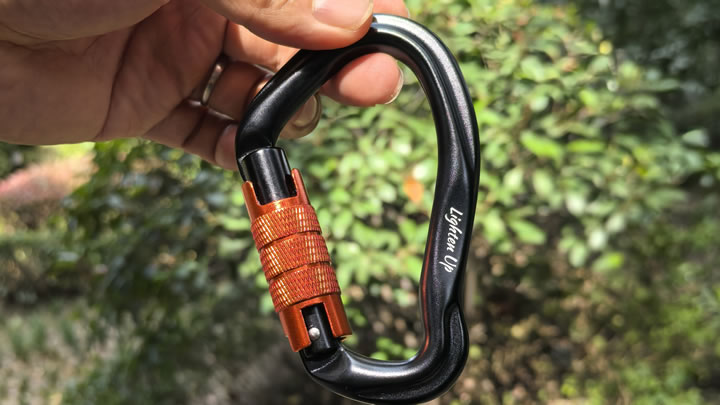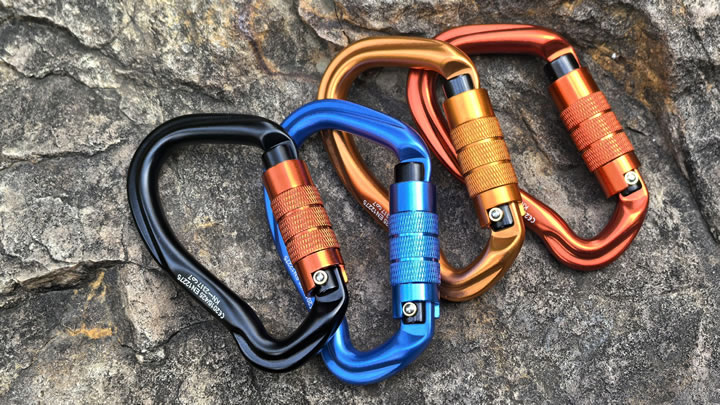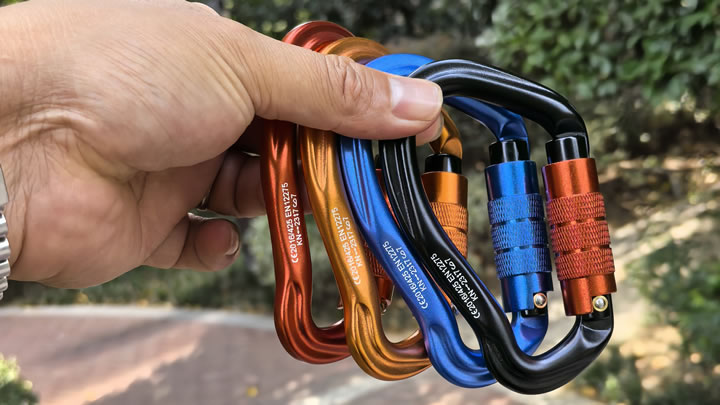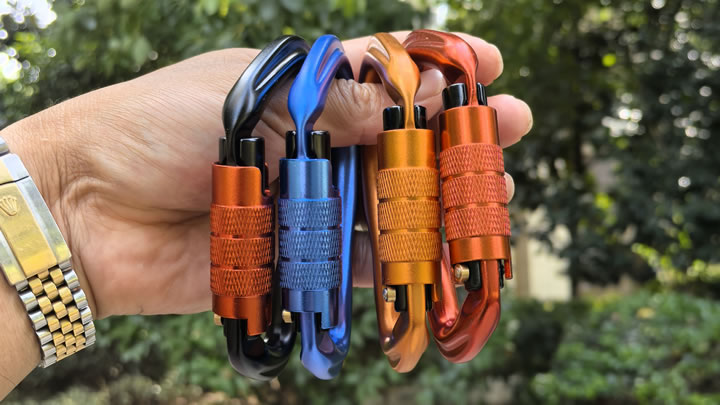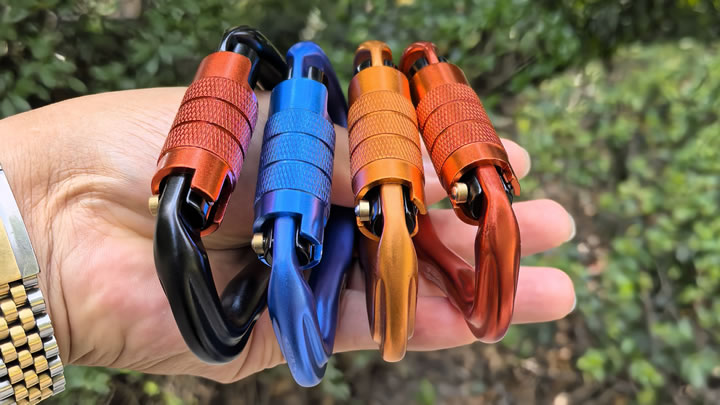What is a swivel carabiner hook?
In the world of carabiners, most are simple, solid pieces of metal. A swivel carabiner, however, introduces a dynamic element: a built-in rotating mechanism that allows the main body of the carabiner to spin 360 degrees independently of the attachment point. This unique design solves specific problems but also comes with critical considerations that every user must understand.
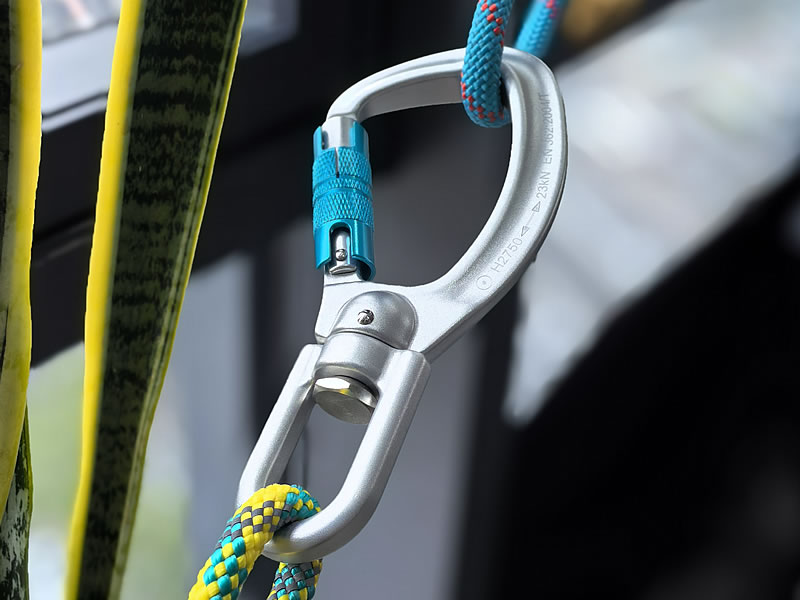
At its core, a swivel carabiner is exactly what the name implies—a carabiner that swivels. It functions by using a robust bearing or bushing system integrated between the spine of the carabiner and its attachment loop. This design prevents the transfer of rotational force, making it an invaluable tool in scenarios where twisting and tangling are major concerns.
The Primary Benefit: Eliminating Twist and Torque
The single greatest advantage of a swivel carabiner is its ability to manage rotation. Without a swivel, any attached rope, lanyard, or leash will naturally twist as it moves, leading to a host of issues:
- Knots and Tangles: Constant rotation can cause ropes and leashes to become severely twisted, creating knots that are difficult to undo and can weaken the material.
- Gate Rotation: A standard carabiner can twist to an awkward position, potentially leading to cross-loading (loading on its weak axis) or having the gate pressed against a surface, which can accidentally open it.
- Material Wear: Persistent twisting concentrates wear on a single spot of the carabiner and the connected gear, accelerating fatigue and reducing the equipment's lifespan.
By allowing free rotation, the swivel carabiner ensures that the load remains straight and untwisted, promoting safer alignment and more even wear distribution.
Common Applications: Where Swivel Carabiners Shine
Swivel carabiners are purpose-built tools. They are not a universal replacement for standard carabiners but excel in specific niches:
- Industrial Rope Access (Lanyards): Workers using twin-leg lanyards for fall protection often use a swivel at the harness connection point. This allows them to move and reposition without the lanyards twisting together, maintaining freedom of movement and safety.
- Dog Leashes: For strong dogs that tend to spin or twist during walks, a swivel carabiner on the leash prevents it from becoming a tangled mess and provides more comfortable control for both the pet and the owner.
- Marine and Rigging Applications: In sailing, boating, or theater rigging, swivels are used to manage the rotation caused by wind, water, or moving loads, preventing lines from becoming hopelessly coiled.
- Certain Non-Critical Climbing Scenarios: While generally avoided for primary protection, swivels are sometimes used in top-rope anchor systems or for hanging heavy loads like portaledges to keep the setup from twisting. However, this requires careful risk assessment.
The Critical Limitations and Safety Warnings
Despite their utility, swivel carabiners have significant drawbacks that limit their use in life-safety climbing:
- The Weakest Link: The integrated swivel mechanism, with its moving parts, introduces a potential failure point that does not exist in a solid carabiner. While well-made swivel carabiners are still strong (often rated between 20-30 kN), they are inherently more complex and prone to failure if the bearing seizes or becomes contaminated with dirt, sand, or salt.
- Weight and Bulk: The swivel assembly makes them heavier and bulkier than their standard counterparts, a significant disadvantage for alpine or sport climbers seeking a lightweight kit.
- Lack of UIAA Certification: It is rare to find a swivel carabiner with a UIAA safety certification (the gold standard for climbing). Most are certified under different industrial standards (like CE-EN 362), which are not designed for the dynamic shock loads of a leader fall.
- Misapplication Risk: The greatest danger is using a cheap, non-rated swivel carabiner from a hardware store for climbing. These are not built to withstand climbing forces and can fail catastrophically.
Conclusion: A Specialized Tool, Not a General-Purpose Hero
So, what is a swivel carabiner hook? It is a specialized problem-solver.
For untwisting a dog leash or managing lanyards in an industrial setting, it is an excellent choice. However, for the vast majority of rock climbing, mountaineering, and any situation involving dynamic loads or leader falls, a standard, certified, non-swivel locking carabiner is the far safer and more reliable option.
Always prioritize simplicity and proven strength for life-critical applications. If you believe a swivel is necessary for your specific technical task, consult with a qualified professional and ensure the gear you select has an appropriate and clear strength rating for the intended use.

